Want to be seen here?
Connect your company to the marketplace for free.
Compare different campaign proposals. Save time and money.
Time for a display campaign? Ocast has gathered thousands of solutions in one place so you can get started quickly. Fill in the form and start receiving offers for campaign proposals.

As part of the award-winning Modern Luxury Media network, Boston Common delivers cutting-edge fashion spreads, international travel features, revealing celebrity profiles, and the latest local know-ho...

As part of the award-winning Modern Luxury network of regional publications, CS delivers cutting- edge fashion spreads, international travel features and revealing celebrity profiles, actively engagin...
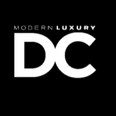
As part of the award-winning Modern Luxury Media network, DC Magazine delivers cutting-edge fashion spreads, international travel features, revealing celebrity profiles, and the latest local know-how,...
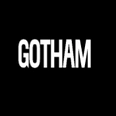
Gotham is a guide to the latest in luxury through an edgier lens. While remaining as elevated as Manhattan, the Gotham reader has an insatiable appetite for contemporary art, fashion, real estate and ...
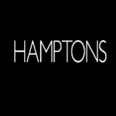
As part of the award-winning Modern Luxury Media network, Hamptons delivers cutting-edge fashion spreads, international travel features, revealing celebrity profiles, and the latest local know-how, en...

As part of the award-winning Modern Luxury Media network, Houston magazine delivers cutting-edge fashion spreads, international travel features, revealing celebrity profiles, and the latest local know...

Los Angeles Confidential covers LA's luxury market and lifestyle from a decidedly Hollywood-focused lens. Los Angeles Confidential filters all through the lens of the city's greatest industry, enterta...

As part of the award-winning Modern Luxury Media network, Manhattan magazine delivers an insider’s perspective of New York, from cutting-edge fashion spreads to profiles of New York’s top tastemakers ...

As part of the award-winning Modern Luxury Media network, Miami Magazine delivers cutting-edge fashion spreads, international travel features, revealing celebrity profiles, and the latest local know-h...
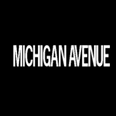
From expert guides to Chicago’s world-class dining and shopping scenes to a complete calendar of the season’s hottest events, art exhibitions, theater and dance, Michigan Avenue celebrates the city, e...

As part of the award-winning Modern Luxury Media network, Modern Luxury Hawai’i delivers cutting-edge fashion spreads, international travel features, revealing celebrity profiles, interior design tren...
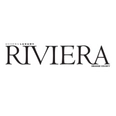
As part of the award-winning Modern Luxury Media network, Riviera Orange County delivers cutting-edge fashion spreads, international travel features, revealing celebrity profiles, and the latest local...

Modern Luxury Scottsdale is at the center of this convergence, where local happenings can have international impact and a chance encounter can turn into front-page news. We’ve had our pulse on Scottsd...

From the publishers of the National Magazine Award-winning San Francisco magazine, Modern Luxury Silicon Valley magazine delivers a unique combination of top-quality community journalism, cutting-edge...

NS Magazine is the leading luxury lifestyle media brand of Chicago's exclusive North Shores suburbs, serving as the most reputable authority with an unparalleled pulse on the market. As part of the aw...
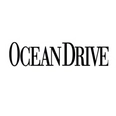
When it launched in 1993, Ocean Drive redefined a media genre and ignited the resurrection of South Beach as the global hot-spot we all know today. Through high-profile parties and infamous photos, Oc...
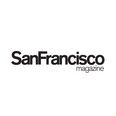
Winner of the 2015 and 2018 National Magazine Award for General Excellence, San Francisco magazine has long been recognized as one of the most ambitious, engaging, informed, and essential regional mag...
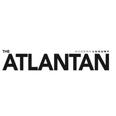
As part of the award-winning Modern Luxury Media network, The Atlantan delivers cutting-edge fashion spreads, international travel features, revealing celebrity profiles, and the latest local know-how...
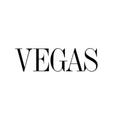
Vegas magazine is at the center of this convergence, where local happenings can have an international impact, and a chance encounter can turn into front-page news. With an unparalleled pulse on Las Ve...

A one-time Western outpost, Denver has become a nexus of Colorado refinement, rich in art, culture, food and wine, mountain architecture, with its own low-key but on-point sense of fashion—always info...
Display advertising, often referred to as banner advertising, involves visual ads placed on various websites, in contrast to text-based search ads that appear in search results on platforms like Google.
While search ads are focused on direct response, display ads aim at building brand awareness through engaging visual content like images or animations. Display advertising also enables retargeting, where ads are redirected to users who have previously visited your website, helping to keep the brand fresh in mind.
With opportunities to measure campaign performance and customize design and target audience, display advertising offers an attractive strategy for brands looking to enhance their online presence and effectively engage their target audiences.
The most effective formats and sizes for display ads vary depending on the platform and target audience, but here are some popular options:
Leaderboard (728x90 px): Positioned at the top of the page, this ad size captures visitors' attention right away.
Medium Rectangle (300x250 px): This size is flexible and can be placed in sidebars or embedded within content.
Large Rectangle (336x280 px): A larger variant of the Medium Rectangle that offers more visible space.
Wide Skyscraper (160x600 px): Often used in sidebars, offering a long, vertical ad space.
Mobile Leaderboard (320x50 px): Optimized for mobile devices and often placed at the top or bottom of the screen.
Consider adhering to industry standards and adapting ad format and size to the specific platform and your target audience. However, the emphasis should be on having well-thought-out content that engages and is relevant to your target audience with clear "Call to Actions" (CTA) to encourage clicks and conversions.
Measuring the effectiveness of your display advertising campaigns is crucial for evaluating the results of your campaign and for fine-tuning future marketing strategies. A first step could be to look over the Click-Through Rate (CTR), which represents the number of clicks your ad receives per view, providing an indication of the ad's engagement level. It is also important to track the conversion rate, which shows how many clicks are converted into desired actions such as sales or leads. Cost Per Conversion is another key indicator that helps you understand the cost-effectiveness of your campaign.
It may also be good to look at the impression rate, that is, how many times the ad has actually reached out and been displayed for brand-building purposes.
One of the major advantages of this type of advertising is its ability for audience targeting, where ads can be directed based on demographics, behavior, and retargeting, enabling a more personalized advertising experience. Moreover, with the use of various analytical tools, it becomes easy to track and measure the campaign's effectiveness by observing data on clicks, conversions, and views, which provides valuable insights.
However, display advertising also has its downsides. Ad blocking is one of the major challenges, where users can choose to block display ads, which in turn reduces the reach and effectiveness of your campaign. Ad fatigue is another downside, where ads that are shown too often can become irritating for the users, leading to decreased engagement and negative brand associations. Despite the ability for audience targeting, audience dilution can be a challenge if precise targeting is not used, which potentially leads to wasted marketing expenses. Additionally, the cost of display advertising can become significant, especially if the campaign is not well optimized to achieve desired results.
The cost of display advertising can vary based on several factors such as website, ad format, and target audience. Besides that, there are different pricing structures one can base on to adjust the cost according to the goal at hand. Below we list different pricing options for display advertising.
CPM (Cost Per Mille or Cost Per Thousand Impressions):
The price for 1000 views of your ad.
Often used for campaigns aimed at increasing brand awareness.
CPC (Cost Per Click):
The price you pay for each click your ad receives.
Used when the goal is to drive traffic to a website or increase interaction.
CPA (Cost Per Acquisition or Cost Per Action):
The price for each specific action or execution, such as a purchase or lead generation, that arises via your ad.
Used when the goal is conversions rather than just views or clicks.
CPL (Cost Per Lead):
The price for each lead generated through your ad.
Used in B2B marketing or for products/services with longer sales cycles.
CPV (Cost Per View):
The price for each viewing of a video ad.
Often used for video-based advertising campaigns.
Each pricing structure suits different goals and campaign types, and choosing the right pricing structure can help maximize the ROI for your display campaign.
Connect your company to the marketplace for free.
No commitments.